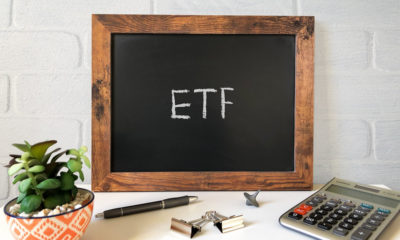Impact Investing
Why Sustainable Funds Are a Difficult Challenge
According to research by Golding Capital Partners, only 30% of all private equity impact funds globally are Article 9 compliant, although many more have sustainable investment objectives and comply with strict sustainability criteria. A survey carried out by ESG Book showed that of nearly 700 European companies, listed and unlisted, no more than 3 to 4 percent manage to fully comply with the rules.

Having hit the ground running in 2021, many funds in Europe classified as sustainable funds based on art. 9 of the EU SFDR Regulation, have made an about-turn and re-entered article 8, also due to the burdensome obligations in terms of reporting. Hardly anyone has moved in the Italian private capital.
The focus on environmental, social, and governance sustainability goals by asset managers, be they open- or closed-end fund managers, UCITS, or alternatives, is increasingly high, in the wake of international regulation pushing them in that direction. It is a matter of compliance with rules then, but also a matter of opportunities that many market players want to seize.
The problem, however, is that the rules are still in the making and are especially difficult to interpret. So much so that at the end of last February, Morningstar magazine reported that dozens of international funds, alternative and non-alternative, with total assets under management of $175 billion, initially launched boasting the most virtuous label possible (those classified as compatible with the criteria required by Art. 9 of EU Regulation 2019/2088 Sustainable Finance Disclosure Regulation or SFDR) had to backtrack and at the end of 2022 were declassified by the managers themselves as compatible only with the criteria of Art. 8.
Read more about the rules regarding sustainable funds and find the latest financial news of the ay with the Born2Invest mobile app.
The maze of rules for sustainable funds
The goal of the SFDR, which came into effect in March 2021, is to limit so-called “greenwashing,” that is, the representation of assets as sustainable, when in reality they are not sustainable, especially environmentally. The SFDR classifies investment funds, regardless of the asset classes to which they are dedicated, into three categories. The one covered by Article 6, which basically includes current funds, which invest without constraints on the sustainability of the assets in their portfolios. Then there is the category covered by Article 8, which has part of the equity or debt portfolio of companies, or other assets such as real estate, where action is being taken to reduce their environmental impact.
Finally, there is Article 9, which includes investment vehicles exclusively dedicated to assets that are already fully sustainable. Basically, in the latter case, these are those companies or activities that fully meet the parameters set out in the so-called EU Taxonomy of Environmental Impacts, i.e., that have 100 percent sustainable revenues, operating expenses, and fixed investments.
The concept is simple, but the translation into practice is not so simple. The de-rating to Art. 8 of many funds initially launched as Art. 9 “is not a positive event for either managers or subscribers,” Fabio Ranghino, head of ESG activities at Ambienta sgr, the leading European manager among those with sustainability as a corporate mission, pointed out to BeBeez Magazine. A de-rating in fact creates both reputational and managerial problems for the institutional underwriters themselves, primarily funds of funds, which must themselves comply with the obligations arising from the SFDR.
Of the contrary flow, moreover, there is no evidence, apart from a few rare cases, such as that of the secondary private equity fund of funds Golding Impact 2021, managed by the German asset manager Golding Capital, which just in recent days was promoted to “dark green,” meeting the demanding requirements of Article 9.
In addition to investments within the EU, the fund’s global private equity impact strategy in fact allows investors to gain exposure to countries such as the United States, Canada, the United Kingdom, Switzerland and some emerging markets. This greatly expands the universe of impact funds available to institutional Article 9 investors and increases the level of diversification substantially.
According to research by Golding Capital Partners, only 30 percent of all private equity impact funds globally are Article 9 compliant, although many more have sustainable investment objectives and comply with strict sustainability criteria. “Impact funds outside the European Union are often able to meet the requirements for Article 9 classification, but they are generally unwilling to incur the additional administrative costs required to do so.
As a result, investors seeking to make Article 9 investments have so far missed these opportunities. Our verification and classification process, conducted in close cooperation with the managers of our target funds, allows us to close this gap in the interest of our investors,” explained Andreas Nilsson, managing director and Head of Impact Investing at Golding, in a note released in recent days.
In essence, Golding is in fact collecting and examining relevant data defined by the SFDR to classify potential target funds that are based outside the EU and therefore not subject to the EU Disclosure Regulation, but still meet all the criteria of Article 9. “It is important to note that we are not reclassifying funds already covered by the SFDR under our criteria. Instead, we are looking at target funds that are not formally classified under the EU Disclosure Regulation with the aim of determining whether they meet the SFDR criteria,” Nilsson added.

Why is it all complicated? Sustainable funds in the focus
That almost all of the funds that have had to turn around by downgrading to Article 8 are open-ended funds is no great consolation to private capital funds, quite the contrary. “The proper application of the SFDR, largely tailored to the characteristics of open-ended funds, is extremely complicated for private capital managers,” confirmed Federica Loconsolo, head of business development and ESG at Riello Investimenti Partners, which manages private equity and private debt funds with a strong focus on ESG issues.
The problem with sustainable funds lies largely in the lack of information. Indeed, stresses Angela Racca, ESG manager at Tages, another sgr devoted to sustainability given that it builds renewable energy facilities, “data quality is the biggest difficulty SFDR poses for managers.” The partner in charge of ESG for Italy at a leading financial advisory firm explains why: “Articles 8 and 9 of the SFDR set objectively measurable targets. And that means availability of reliable data.”
Open-end funds certainly have less control, given the size of their portfolios often invested in tiny percentages of many companies’ capital, and to measure the actual sustainability of their investments they have to rely on data providers, i.e., companies that specialize in sustainability certification, whose number has gradually increased in recent years. However, they have a significant advantage over closed-end funds: they can dispose of problematic assets in the market. The latter, on the other hand, “must rely on information obtained from SMEs that very often are not equipped to provide it,” Loconsolo further pointed out.
A private equity manager, on the other hand, has more in-depth information than open-end funds that invest in listed companies, because he or she is able to carry out due diligence, almost always assisted by a specialized advisor such as ERM, Greenwich, or Cerved Rating on the company in which he or she is investing, all the more so if it is a majority stake, which gives the power to decide and define business plans. And even more so if it is a fund that develops projects from scratch (greenfield) like Tages’ Helios Net Zero, which last spring made its first closing at €200 million and invests in the energy transition. Overtly art. 9, the fund also invests in greenfield projects.
Things are more complicated for a private debt fund, which has no direct influence over the governance of the company, and therefore must rely on the information provided by the company. And there’s another detail to complicate things further: “A private debt fund cannot have a predefined asset allocation,” Riello Investimenti’s Loconsolo pointed out again.
It is no coincidence that there are no art. 9 private debt funds in Italy, with the exception of Alternative Capital Partners sgr’s Sustainable Securities Fund, the first and only PIR Alternative Compliant impact investing AIF operating in Italy today, dedicated to new infrastructure for the circular economy energy transition. That recently reached its second closing at 110 million euros (hard cap is between 150 and 200 million).
But Art. 8s can also be counted on the fingers of one hand. Three examples are the Credit Fund, managed by Tages, with a funding target of 200 million and the first closing expected by the end of 2023, Illimity’s Credit & Corporate Turnaround, and F2i sgr’s Infrastructure Debt Fund 1. Moreover, in the case of F2i, all the funds established after the SFDR came into force, namely Fund IV, Fund V, and the Debt Fund, were established as Article 8 funds.
The offering of sustainable funds in Italy
Even on the equity side, however, the supply of Art. 9 funds is almost nonexistent. Aside from the vehicles managed by Ambienta, which are not fully invested in 100 percent sustainable assets but comply with the disclosure requirements of SFDR art. 9, according to BeBeez Magazine only one other similar initiative is in the pipeline, but it is not expected to see the light before 2024, while very active on this front is Clessidra sgr. In venture capital, the only player active on the art. 9 front is MITO Technologies, which is preparing the first such vehicle in Italy.
The situation is even more difficult for real estate funds, which almost always invest in unsustainable assets: a few days ago Esma reiterated that to bear the art. 9 label, a fund must invest in assets that are already sustainable. This excludes, for example, urban regeneration projects, to which Coima, the real estate group headed by the Catella family, is very committed, and which intends to bring all 30 funds it manages into the top two sustainability categories by 2030.
So it is not surprising that FOF Impact Investing, a fund of funds managed by Fondo Italiano d’Investimento sgr, created to invest exclusively in art. 9 funds and launched at the end of 2022, after raising 50 million euros has not yet made any investments.
But information is not the only problem. Indeed, it seems that European companies that can comply with the EU Taxonomy are very rare. A survey carried out by data provider ESG Book and published at the end of last July showed that of nearly 700 European companies, listed and unlisted, no more than 3 to 4 percent manage to fully comply with the aforementioned European standards, while in about half of them, at least 20 percent of their revenues and operating expenses are related to non-sustainable activities such as the use of fossil fuels.
The direct consequence is that an avowedly art. 9 fund may have serious difficulties investing the resources it raises, and most likely at quite high valuations, keeping substantial resources unused, which in an inflationary environment greatly penalizes real returns. Confirmation comes from Ambienta’s Ranghino himself: “A private equity fund that explicitly states in its prospectus that it wants to have only 100 percent sustainable assets in its portfolio, thus falling under Article 9, can run into serious problems.”
It then becomes decisive what kind of strategy one wants to adopt in the management of the fund, that is, whether one wants to give a sustainability target in terms of disclosure or the weight of sustainable investments in the overall portfolio. In the latter case, the share you set becomes crucial: the greater the weight, the more problematic it will be to achieve the goal. A choice that can also influence the fund’s domicile: “In Luxembourg, if the portfolio is not 100 percent sustainable, the fund cannot be defined as art. 9,” pointed out Racca of Tages.
In other words, an art. 9 fund is something that needs to be carefully weighed and calibrated. It is why today funds in this category, two and a half years after the SFDR came into effect, represent only 3.3 percent of assets under management by European funds.
All these hurdles have triggered a new phenomenon, greenbleaching, that is, investing in sustainable assets without declaring it in order to be comfortable in the art. 6 category, avoiding the costly reporting requirements in art. 8 and even more art.9 vehicles.
A phenomenon that has led the Securities and Markets Stakeholder Group (SMSG), an advisory group acting within ESMA, the Association of European Financial Market Regulators, to fear in an opinion issued last March that “the Article 8 category will become unnecessary, and the Article 9 category will become empty.” The immediate consequence is that “now underwriters have become more cautious and pay much more attention to the level of transparency of the funds they are offered,” reports a financial advisor.
So are sustainable funds destined to be reduced, at least in the EU, to a nice dream and nothing more?
That would be a hasty conclusion. Not least because regulation is expected to evolve in the meantime. The timeline for the new regulations to come into force was described by experts surveyed by Bebeez Magazine as “challenging” and “optimistic.”
“In 2022, a veritable regulatory tsunami rolled over European financial markets. There was very little time to understand and assimilate it,” Loconsolo pointed out. In the meantime, adds Fabrizio Negri, CEO of Cerved Rating, one of Italy’s leading providers of ESG ratings, the flow of data even from small and medium-sized companies is expected to increase and improve to comply with the Corporate Sustainability Reporting Directive, which extends even small entities, such as those in which private equity and debt funds invest, to report in detail on their environmental impact.
__
(Featured image by Kevin Ku via Unsplash)
DISCLAIMER: This article was written by a third party contributor and does not reflect the opinion of Born2Invest, its management, staff or its associates. Please review our disclaimer for more information.
This article may include forward-looking statements. These forward-looking statements generally are identified by the words “believe,” “project,” “estimate,” “become,” “plan,” “will,” and similar expressions. These forward-looking statements involve known and unknown risks as well as uncertainties, including those discussed in the following cautionary statements and elsewhere in this article and on this site. Although the Company may believe that its expectations are based on reasonable assumptions, the actual results that the Company may achieve may differ materially from any forward-looking statements, which reflect the opinions of the management of the Company only as of the date hereof. Additionally, please make sure to read these important disclosures.
First published in Be Beez. A third-party contributor translated and adapted the article from the original. In case of discrepancy, the original will prevail.
Although we made reasonable efforts to provide accurate translations, some parts may be incorrect. Born2Invest assumes no responsibility for errors, omissions or ambiguities in the translations provided on this website. Any person or entity relying on translated content does so at their own risk. Born2Invest is not responsible for losses caused by such reliance on the accuracy or reliability of translated information. If you wish to report an error or inaccuracy in the translation, we encourage you to contact us.

-

 Business2 weeks ago
Business2 weeks agoLegal Process for Dividing Real Estate Inheritance
-

 Fintech12 hours ago
Fintech12 hours agoJPMorgan’s Data Fees Shake Fintech: PayPal Takes a Hit
-

 Fintech1 week ago
Fintech1 week agoPUMP ICO Raises Eyebrows: Cash Grab or Meme Coin Meltdown?
-

 Africa3 days ago
Africa3 days agoSurging Expenditures Widen Morocco’s Budget Deficit Despite Revenue Growth
























